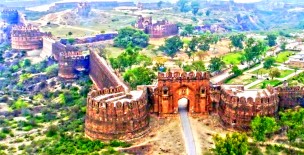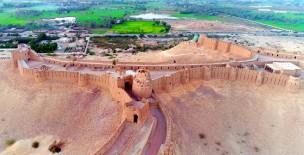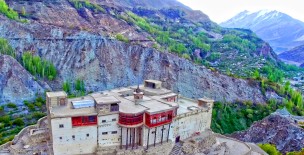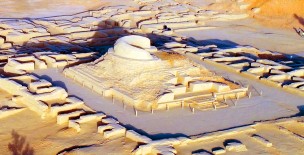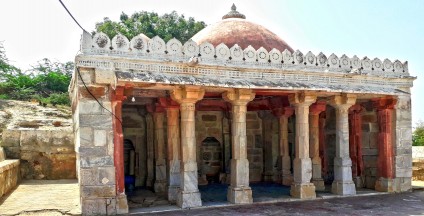Hiran Minar is an early 17th-century Mughal-era complex located in the town of Sheikhupura, about 40 kilometres northwest of Lahore in the Pakistani province of Punjab.
The complex was built at the site of a game reserve in honour of Mughal Emperor Jahangir's pet antelope. The Emperor is remembered for his fondness of nature and his complex embodies the Mughal relationship between humans, pets, and hunting.
The Jahangir-era minaret stands 30 metres tall, and was built in 1606 C.E. as a tomb marker for the emperor's pet antelope, Minraj. The sides of the minar are inscribed with a eulogy to the pet antelope.
A massive rectangular water-tank pool measuring 229 metres by 273 metres lies at the heart of the complex. At the center of each side of the tank, a brick ramp slopes down to the water, providing access for wild game that were sought by hunters.
An octagonal pavilion built during the reign of Shah Jahan is at the centre of the pool. The pavilion is two-storeyed, and is topped by a rooftop 'chhatri' that served as a stone gazebo. The pavilion's architecture is similar to the Sher Mandal at Delhi's Purana Qila, built by Emperor Humayun.
The pavilion was surrounded not only by the water tank, but also semi-wilderness. The pavilion was thus likely used for recreational purposes.
A causeway spans the pool to connect the minaret with the pavilion along an axis which passes through a gateway.
Unique features of this particular complex are the antelope's grave and the distinctive water collection system.
At each corner of the tank (approximately 750 by 895 feet (273 m) in size), is a small, square building and a subsurface water collection system which supplied the water tank; only one of these water systems is only extensively exposed today.


